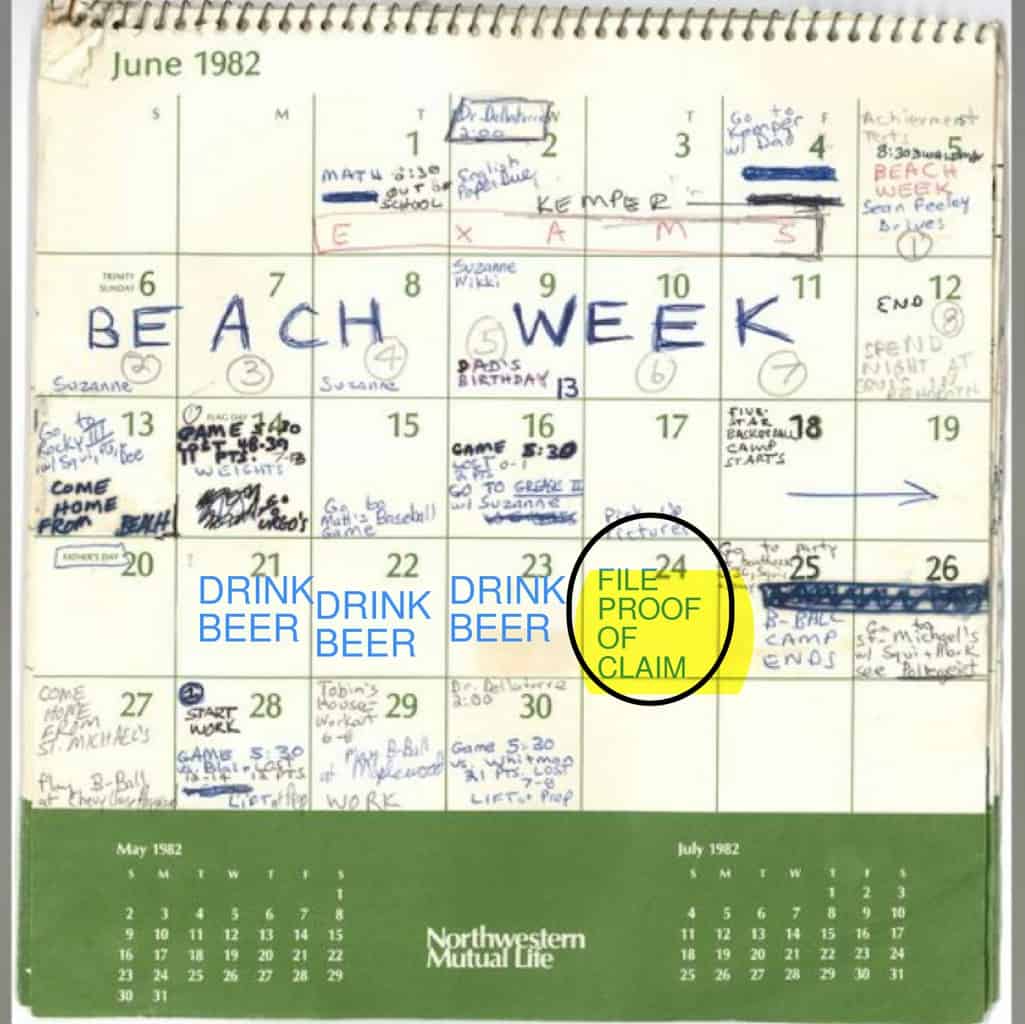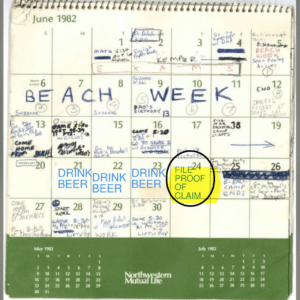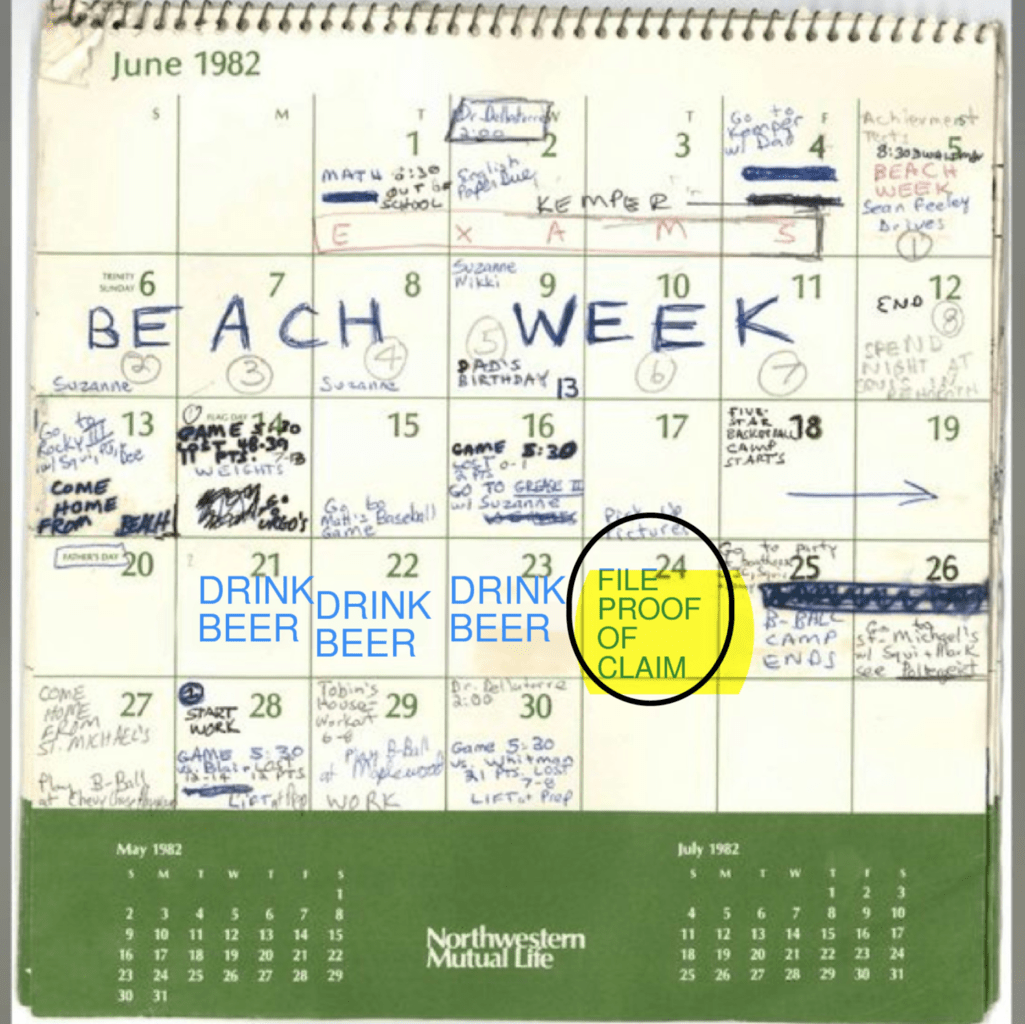The Ira Smith Trustee Team is absolutely operational and Ira, in addition to Brandon Smith, is readily available for a telephone consultation or video meeting. We hope that you and your family are safe and healthy.
Commercial Tenancies Act Ontario: Introduction
On October 28, 2020, the Court of Appeal For Ontario clarified the interplay between the Commercial Tenancies Act Ontario and the Bankruptcy and Insolvency Act (Canada) (BIA) when a commercial tenant in Ontario goes bankrupt.
In this Brandon’s Blog, I describe what the appellate court decided in the 7636156 Canada Inc. (Re), 2020 ONCA 681 (CanLII) case. I also discuss what it means for commercial landlords when one of its tenants goes bankrupt and what the relationship is between the Commercial Tenancies Act Ontario and the BIA.
Commercial Tenancies Act Ontario: The facts
The facts were not in dispute. On May 1, 2018, the corporate tenant filed for bankruptcy and the Trustee was appointed. On July 23, 2018, the Trustee disclaimed the lease on the commercial premises.
One of the schedules for the commercial lease required the tenant to lodge a letter of credit (LOC) in the amount of $2.5 million in favour of the landlord. The LOC was to have an initial term of one year, renewed each year on an automated basis until 60 days after the expiry of the lease’s term. It was stipulated that the LOC is to continue to stand as protection for the landlord in case the tenant ended up being bankrupt.
According to the lease, the tenant provided the LOC. It was an irrevocable standby LOC issued by The Bank Of Nova Scotia (BNS) for the $2.5 million amount in favour of the landlord. The LOC had been renewed annually before the date of bankruptcy.
To get the LOC, the tenant put up money collateral in the amount of $2.5 million to BNS which was invested in a BNS GIC. BNS took security against the company and registered a financing statement under the Personal Property Security Act, R.S.O. 1990, c. P.10. The security was good and valid as against the Trustee. The Trustee was in agreement that the security was valid.
Commercial Tenancies Act Ontario: The landlord draws against the LOC
As of the bankruptcy date, there were no arrears of rent owing under the lease. Since the commercial tenant was bankrupt, the landlord made 3 claims on the LOC. These three claims totalled the full $2.5 million LOC value.
The initial draw, in the amount of $207,732.28, was made on May 16, 2018, before the Trustee disclaimed its interest in the commercial lease. Under the Commercial Tenancies Act Ontario, the Trustee has the right to occupy the premises for 3 months from the date of bankruptcy, if it wishes. By the end of the 3 months, whether the Trustee occupied or not, it must either disclaim its interest in the lease or adopt it and assign it to a purchaser.
The opportunity to sell the lease would happen if the rented commercial premises are in a sought after location and the lease has value in it. A lease can have value if it is at a rental rate below the market rent at the date of bankruptcy.
The 2nd draw, in the amount of $1,709,768.40, occurred on December 4, 2018. The 3rd claim against the LOC, in the amount of $582,499.32, was made on April 2, 2019.
The LOC draws covered the losses asserted by the landlord as follows:
- $207,732.28 being the rent for May 2018;
- $1,621,160.72 for rent for the months of August 2018 to April 2019, inclusive;
- $368,479 for the unamortized cost for the landlord allowance as included in the lease, inclusive of interest; and
- $302,628 for restoring the premises, as allowed for in the lease.
In support of each demand against the LOC, the landlord gave BNS the required certificate verifying the debt of the tenant under the lease. The landlord was the beneficiary under the LOC for the debt of the tenant, for which repayment was demanded from the tenant and not paid.
BNS accepted the landlord’s draw claims under the LOC and paid the complete amount of the LOC to the landlord. BNS never asked the landlord to return the funds paid.
The landlord believed that it was entitled to the funds under the lease drawn up in accordance with the Commercial Tenancies Act Ontario. BNS also believed that the landlord fulfilled its requirements to receive payment under the LOC from BNS.
Commercial Tenancies Act Ontario: The landlord’s proof of claim
The landlord knew how to complete form 31 proof of claim and filed it with the Trustee. The landlord filed for a preferred claim in the amount of $623,196.84. The preferred claim was for 3 months’ accelerated rent: May, June, and July 2018. The landlord’s proof of claim also attached a schedule showing the calculations.
In Ontario, a landlord’s preferred claim for rent in case of a commercial tenant’s bankruptcy is limited: a maximum of 3 months’ pre-bankruptcy arrears as well as for accelerated rent, a 3-month post-bankruptcy claim.
The right to accelerated rent must be stipulated in the lease. Further, the landlord’s entire preferred claim is limited to the value of the bankrupt company’s property on the premises, after the claims of trust claimants or secured creditors.
All these rights are laid out in the Commercial Tenancies Act Ontario.
Commercial Tenancies Act Ontario: The Trustee’s disallowance of the landlord’s proof of claim
The Trustee disallowed the landlord’s proof of claim, stating that the landlord’s preferred claim for three months’ accelerated rent had been paid by the landlord’s draws against the LOC.
The disallowance also stated that:
- the funds used to pay the landlord from the LOC originated from funds that came from the bankrupt tenant;
- the LOC was to be reduced prior to the date of bankruptcy; and
- the landlord did not include proper support for its case for further damages in regard to the tenant’s obligations under the commercial lease.
The Trustee’s position that the LOC should have been reduced in amount is not important for the purpose of this Brandon’s Blog. I won’t spend any time on it other than to tell you that the court did not agree with the Trustee’s position.

Commercial Tenancies Act Ontario: The landlord appeals
The landlord appealed the disallowance to the Registrar in Bankruptcy. The Registrar permitted the landlord’s appeal partly. She held that considering that the landlord had drawn on the LOC for the May 2018 rent, the Trustee appropriately disallowed the preferred claim for the month of May.
However, she further determined that the landlord was correct in its accelerated rent claim for the other two months. The landlord could look for payment from the bankruptcy estate or from the LOC. According to the Registrar, the Trustee therefore incorrectly refused the preferred claim for those other two months.
Commercial Tenancies Act Ontario: The Trustee’s motion to a judge
The Trustee wasn’t finished debating about the landlord’s rights to claim against the entire LOC given the Trustee’s disclaimer of the lease, the Commercial Tenancies Act Ontario and the BIA. The Trustee made a motion to the court to determine what amount from the LOC the landlord was entitled to. The Trustee’s position was that the landlord was not entitled to the full amount of the LOC. Since the security for the LOC was funding from the company, any excess not required by BNS should be paid to the Trustee.
The parties’ positions that they laid out in their respective materials were largely what was already before the Master. The motion judge concluded that the landlord was only entitled to make use of the LOC for the 3 months’ accelerated rent.
The judge’s reasoning was:
- a disclaimer of the lease by a trustee in bankruptcy is the same as a voluntary abandonment of the lease by the occupant under the Commercial Tenancies Act Ontario with the consent of the landlord. This snuffs out all obligations of the tenant under the commercial lease;
- he turned down the landlord’s submissions that the independent obligation of BNS to it under the LOC meant that the funds coming from the LOC were not the property of the bankrupt and therefore not payable to the Trustee;
- that upon the disclaimer of a lease by a Trustee, a bankrupt commercial tenant does not owe any amounts to the landlord. Therefore, the landlord cannot make use of the LOC for any claim other than the 3 months of rent arrears and the 3 months of accelerated rent; and
- that the obligation of BNS, under the LOC, to make payment to the landlord beneficiary is limited to the amount owing by the commercial tenant under the lease. As he ruled that from the disclaimer the tenant’s only obligation was for the rent arrears and the accelerated rent, therefore, the landlord could not claim any other amounts against the LOC.
Commercial Tenancies Act Ontario: The landlord appeals to the Court of Appeal For Ontario
The question before the appellate court that I want to discuss is, did the judge err in holding that, upon the disclaimer of the lease by the Trustee, the landlord was not qualified to make use of the LOC other than for the amount of its preferred claim?
The decision of the Court of Appeal for Ontario in considering this case and the interplay between the BIA and the Commercial Tenancies Act Ontario clarified exactly what it means when a Trustee issues a disclaimer of lease and what the contractual relationship around the LOC means.
The Trustee argued that when it disclaimed the lease, the landlord was thereupon stopped from making use of the LOC for any amount other than the amount of its preferred claim. The Trustee contended that such a concept of insolvency legislation overrides the autonomy principle for a LOC and therefore limits the lawful amount the landlord could draw.
The Court of Appeal For Ontario made certain findings relating to a disclaimer of lease by a Trustee as follows:
- The disclaimer under the Commercial Tenancies Act Ontario is for the sole benefit of the bankrupt commercial tenant.
- While a disclaimer operates to finish the bankrupt tenant’s responsibilities under the lease, the disclaimer cannot be interpreted to be a consensual surrender for all purposes (emphasis added).
- A Trustee’s disclaimer of a bankrupt tenant’s lease ends the legal rights of the landlord against the bankrupt tenant’s estate relative to the unexpired term of the lease, aside from the three months’ accelerated rent claim under the Commercial Tenancies Act Ontario and the BIA.
Commercial Tenancies Act Ontario: The landlord has a LOC on things
The appellate court recognized that the ability of the landlord to rely upon the LOC for more than just its preferred claim depends on the wording of the lease. In this case, the lease stated that the LOC functions as safety and security for indemnification of the landlord for losses:
“resulting from any termination, surrender, disclaimer or repudiation of this lease … in connection with any insolvency and bankruptcy or otherwise” and that the Landlord’s rights in respect of the LOC were not affected by the disclaimer of the Lease in any bankruptcy proceeding but would “continue with respect to the periods prior thereto and thereafter as if the Lease had not been surrendered, disclaimed, repudiated or terminated.”
Further, one of the terms of the LOC was that it will not be released, discharged or affected by the bankruptcy of the commercial tenant or the disclaimer of the lease.
The appellate court also went on to state that the motion judge’s decision runs counter to a standard principle relevant to LOCs. That is that providing financial institutions, such as BNS, have an independent responsibility to make a settlement to the beneficiary. The LOC is a contract between BNS and the landlord. It is regulated by the principle of the freedom or autonomy of LOCs, not by the BIA or the Commercial Tenancies Act Ontario.
Under the freedom principle, the issuer needs to pay the beneficiary upon appropriate qualification, subject to the minimal exemption for fraud which was not found in this case.
So with a properly worded lease and a properly worded LOC as security, the landlord can call on the LOC for all claims against the bankrupt commercial tenant after a Trustee disclaims its interest in the lease. With these facts, the landlord was successful in being able to claim everything it was owed, up to the limit of the LOC.
Commercial Tenancies Act Ontario summary
I hope you have enjoyed this Commercial Tenancies Act Ontario Brandon’s Blog. A sick insolvent company’s business can be saved by a debt restructuring.
Do you or your company have too much debt? Are you or your company in need of financial restructuring? The financial restructuring process is complex. The Ira Smith Team understands how to do a complex restructuring. However, more importantly, we understand the needs of the entrepreneur or the person who has too much personal debt.
You are worried because you are facing significant financial challenges. It is not your fault that you are in this situation. You have been only shown the old ways that do not work anymore. The Ira Smith Team uses new modern ways to get you out of your debt troubles while avoiding bankruptcy. We can get you debt relief freedom.
The stress placed upon you is huge. We understand your pain points. We look at your entire situation and devise a strategy that is as unique as you and your problems; financial and emotional. The way we take the load off of your shoulders and devise a debt settlement plan, we know that we can help you.
We know that people facing financial problems need a realistic lifeline. There is no “one solution fits all” approach with the Ira Smith Team.
That is why we can develop a restructuring process as unique as the financial problems and pain you are facing. If any of this sounds familiar to you and you are serious in finding a solution, contact the Ira Smith Trustee & Receiver Inc. team today.
Call us now for a free consultation.
We will get you or your company back on the road to healthy stress-free operations and recover from the pain points in your life, Starting Over, Starting Now.
The Ira Smith Trustee Team is absolutely operational and Ira, in addition to Brandon Smith, is readily available for a telephone consultation or video meeting. We hope that you and your family are safe and healthy.





